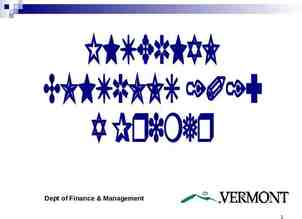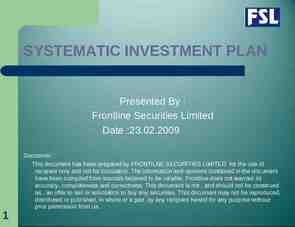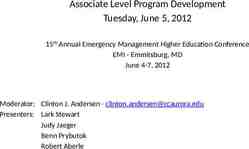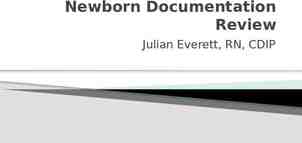Dr. Omer Maaitah Vibration
23 Slides782.50 KB

Dr. Omer Maaitah Vibration

Course Outline This outline will deal with these subject deeply Day one: General review of soil and foundation Shear strength of soil Elastic modulus Shear modulus Expansive soil Physical and mechanical soil properties Soil improvement Type of shallow footing (Isolated, Combined and Mat footing) Design of shallow footing Case study Day two Dynamic loading Modeling in dynamic loading Seismic loading Damping Elements of vibration theory Natural Frequency and Forced Frequency Resonance Day three Vibration and dynamic modeling Degree of freedom Machine Foundation Wave P-wave, S-wave, love wave Soil stiffness Day Four: Pile Foundation General concept Mat foundation Case study on mat foundation Using excel to solve mat foundation Type of pile Sheet pile Design of single pile Pile Group Day Five: Case study (solve problems and examples) Design of single pile/ Dynamic and static method Design pile group Dynamic and static method Using Excel in design of single pile and pile Group

1- Introduction Foundations supporting reciprocating engines, compressors, radar towers, punch presses, turbines, large electric motors and generators, etc. are subject to vibrations caused by unbalanced machine forces as well as the static weight of the machine. If these vibrations are excessive, they may damage the machine or cause it not to function properly. Further, the vibrations may adversely affect the building or persons working near the machinery unless the frequency and amplitude of the vibrations are controlled. The design of foundations for control of vibrations was often on the basis of increasing the mass (or weight) of the foundation and/or strengthening the soil beneath the foundation base by using piles. This procedure generally works; however, the early designers recognized that this often resulted in considerable over design. Not until the 1950s did a few foundation engineers begin to use vibration analyses, usually based on a theory: 1.surface load on an elastic half-space. 2.lumped mass The principal difficulty in vibration analysis now consists in determining the necessary soil values of (shear modulus G' and Poisson's ratio) The general methods for design of foundations, both shallow and deep, that are subject to vibration (but not earthquakes) and for the determination of the required soil variables will be taken up in some detail in the following sections.

The problems associated with foundations design to resist dynamic loading either from supporting machinery or from external source still require special solution by considering local soil condition and environment. At first the foundation must satisfy the criteria for static loading then it must be satisfactory for resisting the dynamic loadings. Establishing the design criteria is probably the most important step in the design process this will define the problem to be solved and it will be the gage by which a judge can be made on the computed solution and if possible measurements of performance of prototype could be made for dynamically loaded foundation. The criterion is generally described in terms of limiting value of acceleration, velocity or displacement under the operation condition.

Dynamic loading generated by natural forces of earthquakes, wind wave, traffic, blasting and neighboring machinery may be transmitted to the foundation through a structural system or through the soil. In most of these cases it is necessary to obtain field measurement under conditions similar to those for proposed design and to assume that these loading will be encountered by the prototype. The process of obtaining representative value for the critical soil properties is probably the most difficult part of the design.

Soil samples must be obtained from the proposed construction site and tested under conditions that are anticipated to represent the operating environment. While many developments have influenced the evaluation of soil dynamics anew contributions have had especially important impacts. These special events and investigation are the milestones in the evaluation of soil dynamic

Many experimental investigations on the dynamic response of footing have been conducted. In the last fifteen years considerable progress in this area of soil dynamic has been made and many researchers have studies different aspects of the problem. A comprehensive account of the past work up to the year 1969 can be found in McNeill (1969), or Richart, Hall and woods (1970) and review of the present state of art in dynamic analysis of foundations is presented in the recent study by Gazetas (1983). Here the main purpose is not to cover in details all the pertinet work conducted in the past but is to outline all empirical, analytical and numerical models study since early in the 20th century up to now.

For analysis different approximate methods have been used in the early years, which were mainly based on engineering intuition and empirical rules. the cornerstone of the evaluation of analytical techniques with more scientific basic was the year 1904 when Lamb formulated and solved the problem for harmonically varying point force acting on the surface of an elastic half – space . in the 1930’s the first engineering application of Lamb’s problem (dynamic Boussinesq problem ) was employed by Reissner (1936) , to study the response of the vertically loaded cylindrical disk on the surface of an elastic half- space theory. Even though this work was an approximate solution to the dynamics response of foundation on the surface of an elastic half – space it was a pioneering effort in this area and prompted many more investigations in the year after it because of it’s idealized nature, certain mathematical simplification which are not quite realistic in narrowing the gap between the result of theory and real behavior of Foundation-soil system.

The following parameters influences the vertical vibration response (amplitude) of footing on sand: 1. 2. 3. 4. 5. 6. Vertical load amplitude Force frequency Footing mass Shape and contact area of footing Footing embedment depth Degree of saturation

Amplitued mm 0.14 Po 1 kN 0.12 Po 2 kN 0.1 0.08 0.06 0.04 0.02 0 0 1 2 3 Frequency Hrtz. 4 5

2-Elements of Vibration Theory A solid block base rests in the ground as in Fig. 20-1. The ground support is shown replaced by a single soil spring. This is similar to the beam-on-elasticfoundation case except the beam uses several springs and the foundation base here only uses one. Also this spring is for dynamic loading and will be computed differently from the beam problem. As we shall later see, the spring will be frequency-dependent as well. Here the soil spring has compressed under the static weight of the block an amount

Figure 1: Foundation base in equilibrium position just prior to being displaced slightly downward by a quick push.

At this time zs and the spring Kz are both static values. Next we give the block a quick solid shove in the z direction with a quick release, at which time the block begins to move up and down (it vibrates). Now the zs and soil Kz are dynamic values. We probably could not see the movement, but it could be measured with sensitive electronic measuring equipment. After some time the block comes to rest at a slightly larger displacement z's as shown in Fig. 1. The larger displacement is from the vibration producing a state change in the soil (a slightly reduced void ratio or more dense particle packing).

Here the soil spring has compressed under the static weight of the block an amount We can write the differential equation to describe this motion [given in any elementary dynamics or mechanical vibration textbook (as Den Hartog (1952)], using the terms shown in Fig. I-a in a form of F ma to give, in one dimension,

Figure 2: Plot of time-displacement curves for three types of damped movement. The plot is relative since the natural frequency is constant and o t is to the same scale. The variable in the three plots is the damping factor

In the general vibrating base case, however, we have a base load consisting of a large weight colliding with an anvil as in a punch press, a piece of rotating machinery, or an operating engine. The engine in turn may drive a piece of equipment such as a compressor or pump. Any of these latter can have the effect of an unbalanced force (or several forces) rotating about an axis such as a crankshaft (see Fig. 203). From elementary dynamics a mass me connected to a shaft with an arm of y rotating at a circular frequency of (o produces a force at any instant in time of

Figure 3: Types of foundation exciting forces.












